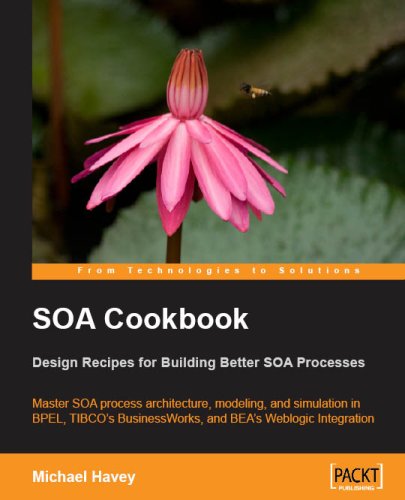

Most ebook files are in PDF format, so you can easily read them using various software such as Foxit Reader or directly on the Google Chrome browser.
Some ebook files are released by publishers in other formats such as .awz, .mobi, .epub, .fb2, etc. You may need to install specific software to read these formats on mobile/PC, such as Calibre.
Please read the tutorial at this link: https://ebookbell.com/faq
We offer FREE conversion to the popular formats you request; however, this may take some time. Therefore, right after payment, please email us, and we will try to provide the service as quickly as possible.
For some exceptional file formats or broken links (if any), please refrain from opening any disputes. Instead, email us first, and we will try to assist within a maximum of 6 hours.
EbookBell Team

5.0
108 reviewsSOA Cookbook covers process-oriented SOA. BPEL is the best-known language in this area, and this book presents numerous BPEL examples. It also studies proprietary vendor process languages such as TIBCO's BusinessWorks and BEA's Weblogic Integration. If you are building SOA processes in the field, chances are you are using one of the languages discussed in SOA Cookbook. The book assumes that the reader is comfortable with XML and web services.
Author Michael Havey works with SOA in the field for TIBCO (and previously for IBM, BEA, and Chordiant). SOA Cookbook is Michael's second book. Essential Business Process Modeling, his first book, was published in 2005.
What you will learn from this book?
Approach
As a cookbook, this book can be regarded as a set of gourmet recipes for SOA. Each of the eight chapters that follow the introductory chapter covers an important concept in process-based SOA and teaches techniques to build solutions based on the concept. Working examples are developed in BPEL, TIBCO's BusinessWorks and BEA's Weblogic Integration.
Who this book is written for?
The book is intended for hands-on SOA architects, designers, and developers who want to learn techniques in process orchestration. Many of these readers use, or will soon start using, languages such as BPEL, TIBCO's BusinessWorks, or BEA's Weblogic Integration in their projects.
This intermediate-level book assumes that the reader is comfortable reading XML and knows the basic concepts of web services. The book presents several BPEL and BPMN examples, but it explains specific language constructs on the fly; the reader need not have background in these languages